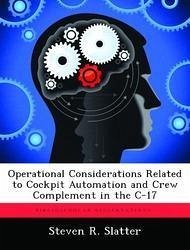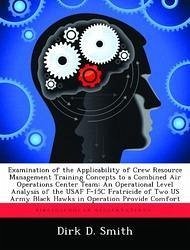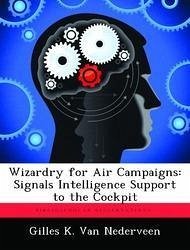Nicht lieferbar

Operational Considerations Related to Cockpit Automation and Crew Complement in the C-17
Versandkostenfrei!
Nicht lieferbar
The newest airlifter in the Air Force inventory, the C-17, has a cockpit crew complement of two (pilot and copilot). This is a departure from the traditional airlift crew makeup that included additional crewmembers to handle navigation and aircraft systems. The extensive use of cockpit automation allowed this crew reduction. Major airlines, also making extensive use of cockpit automation, are finding challenges with automation in their fairly routine and mundane ops (compared with that of the military). Recent research has shown that automation can actually, rather than decreasing workload, in...
The newest airlifter in the Air Force inventory, the C-17, has a cockpit crew complement of two (pilot and copilot). This is a departure from the traditional airlift crew makeup that included additional crewmembers to handle navigation and aircraft systems. The extensive use of cockpit automation allowed this crew reduction. Major airlines, also making extensive use of cockpit automation, are finding challenges with automation in their fairly routine and mundane ops (compared with that of the military). Recent research has shown that automation can actually, rather than decreasing workload, increase cockpit workload beyond that of less automated aircraft during those periods where workload is already traditionally high. The mission of the C-17 is likely to see a less experienced crew flying low-level in a threat environment, talking to multiple controlling agencies, and trying to get into a location they`ve never seen after a 15 hour double air-refueling flight from the continental United States. These issues warrant operational consideration when employing the C-17 on some of it's most demanding missions, and are also applicable to other new or upgraded aircraft where similar cockpit/crew situations exist.






